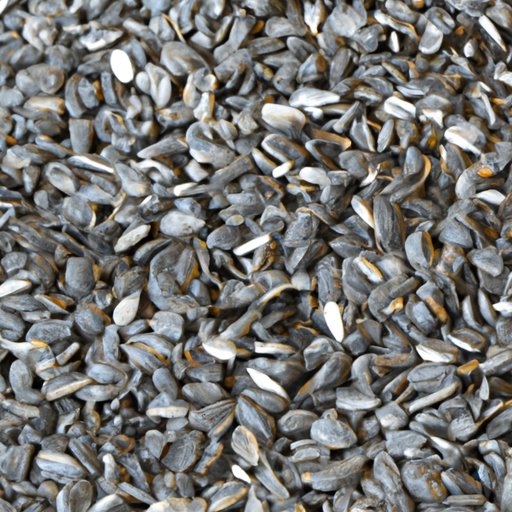Introduction
Sunflower seeds are a versatile and nutritious snack that can be added to salads, cereals, baked goods, and more. Not only do they add texture and flavor, but they also offer numerous health benefits. Knowing how to harvest sunflower seeds for eating is an important step in enjoying their many benefits.
Overview of Sunflower Seeds
Sunflowers are tall annual flowering plants native to North America, and their iconic yellow flowers make them a beloved garden staple. The seeds of these flowers are harvested for a variety of uses, including cooking oil, birdseed, and human consumption. Sunflower seeds come in a range of colors and sizes, with black, gray, striped, and striped-black varieties available.

Benefits of Eating Sunflower Seeds
Sunflower seeds are packed with essential vitamins and minerals, such as vitamin E, magnesium, phosphorus, zinc, and selenium. They are also rich in healthy fats and antioxidants, which can help reduce inflammation. Eating sunflower seeds may also aid in weight loss, reduce cholesterol levels, and improve heart health.
Planting and Growing Sunflowers
Before you can harvest sunflower seeds, you must first plant and grow them. To give your sunflowers the best chance of thriving, select the right variety. Some varieties produce larger, meatier seeds that are better for snacking, while others are smaller and better suited for baking. Make sure to plant your sunflowers in a sunny spot with plenty of space for them to spread out.
Harvesting Sunflower Seeds
Once your sunflowers have bloomed and the petals have started to turn brown, it’s time to begin harvesting. Start by cutting off the heads of the flowers and laying them out to dry on a flat surface. Once the seeds have dried completely, you can remove them from the head. This can be done by hand or with the help of a tool, such as a brush or comb.

Drying and Storing Sunflower Seeds
After the sunflower seeds have been removed from the head, they need to be dried. This can be done by placing them in a single layer on a baking sheet and baking at a low temperature for several hours. The seeds should be stirred occasionally to ensure even drying. Once the seeds have cooled, store them in an airtight container in a cool, dry place.

Cooking and Eating Sunflower Seeds
Sunflower seeds can be enjoyed in a variety of ways. They can be roasted, salted, and flavored with herbs and spices, or added to salads, cereals, and baked goods. Sunflower seeds are also popular as a topping for soups, stews, and casseroles, or simply eaten on their own as a healthy snack.
Nutritional Benefits of Sunflower Seeds
In addition to being a tasty treat, sunflower seeds are also a good source of protein, fiber, and healthy fats. They are also high in vitamin B6, folate, and magnesium, all of which are important for healthy functioning. Incorporating sunflower seeds into a balanced diet can help provide essential nutrients and keep you feeling full and energized.
Conclusion
Harvesting sunflower seeds for eating is easy and rewarding. With a little bit of planning and care, you can enjoy the nutritional benefits and delicious flavor of homegrown sunflower seeds year round. Whether you roast, salt, or bake them, sunflower seeds are sure to become a favorite snack.
(Note: Is this article not meeting your expectations? Do you have knowledge or insights to share? Unlock new opportunities and expand your reach by joining our authors team. Click Registration to join us and share your expertise with our readers.)
